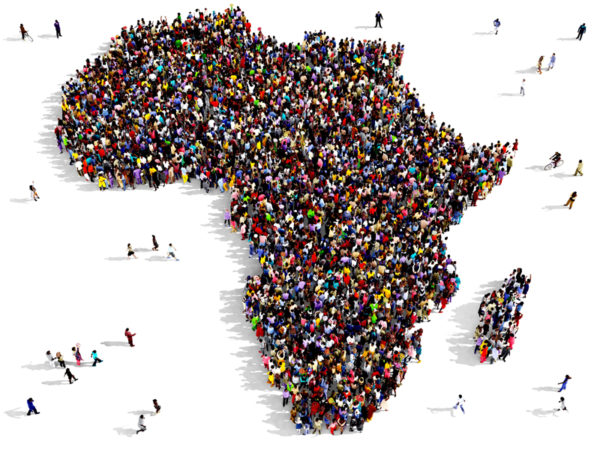Carlos Lopes is a professor at the Mandela School of Public Governance at the University of Cape Town, High Representative of the African Union for partnerships with Europe post-2020, and a member of the Global Commission on the Economy & Climate
This week, heads of African states are convening at the African Union Summit in Addis Ababa, Ethiopia, where they will discuss the African Union’s strategy for socio-economic development, known as Agenda 2063. This agenda casts a vision of inclusive growth and sustainability, in the face of the growing risk of climate change. It is true: rising global temperatures pose a serious challenge to the lives and livelihoods of Africans. But climate change also offers an unprecedented opportunity to steer our continent towards a more sustainable, inclusive and prosperous future.
The most recent report of The New Climate Economy found that bold climate action could deliver US$26 trillion in global economic benefits through to 2030. It could also: generate 65 million new low-carbon jobs in 2030; prevent 700,000 premature deaths from air pollution in 2030, and lead to more women in the paid workforce. But this opportunity is finite.
Over the next 10-15 years we expect to invest about US$90 trillion in infrastructure (more than the total current stock) and the global South will account for roughly two-thirds of this. To add to the urgency, these investment decisions will be taken in the next 2-3 years. Whether or not this infrastructure is sustainable will be a critical determinant of future growth and prosperity. We must act quickly and the following three pillars for action can guide next steps in Africa: green industrialisation, smart urban development and sustainable agriculture.
Green industrialisation is a major opportunity for African countries to ‘leapfrog’ the fossil-fuel based growth strategies of developed countries, instead charting sustainable growth paths to a healthier, more prosperous future. One winning strategy is to create Special Economic Zones in countries that concentrate investments in areas with reliable and low-carbon infrastructure, high-quality institutions and social services. In Ethiopia’s Hawassa industrial park, one of 16 federally-operated sites, industry is powered mostly by hydro-electricity. The park also features energy-saving innovations in factory lighting and shared infrastructure. Hawassa has attracted a number of domestic companies, as well as companies from China, India, and the U.S.
In Africa’s rapidly growing cities, economic development depends on transport to connect residents with good jobs. In 2008, Lagos became the first African city with a bus rapid transit system (BRT). The Lagos BRT today carries over 200,000 passengers daily, reducing travel times by an average of 30 percent, cutting transport costs for low-income passengers by as much as 31 percent, and reducing carbon emissions by 13 percent. Strong national urban policies can support city leaders in developing sustainable transport by providing coordinated planning and enabling larger-scale investment.
Finally, agriculture still plays a crucial role in Africa’s economy, providing up to 60 percent of the region’s jobs. Yet farm yields and revenues are increasingly vulnerable to climate impacts. In fact, by 2020 Africa will spend US$7-15 billion annually to adapt to climate change. Even if global temperature increase is held below 2 degrees C (3.6 degrees F), the adaptation price tag could balloon to US$50 billion by 2050. Now is the time to make Africa’s agriculture resilient, and as a result more productive. Young entrepreneurs across the continent are already implementing solutions, evidenced at a recent start-up accelerator in Nairobi. If these efforts scale up – with support from investors and governments – the sustainable food and agriculture industry could be worth US$2.3 trillion by 2030, and provide 70 million jobs globally.
Climate-resilient growth across all sectors requires finance and policy attention from both domestic and international leaders. With limited public resources and competing demands, much of the investment needed to finance green growth will come from private sources. Greater use of blended finance approaches – where public finance is used to help attract and combine with private investment – could be key. There is promising momentum. In 2017, the African Development Bank approved US$135 million in blended finance for renewable energy, and more recently a US$25 million investment into a renewable energy equity fund. The fund would add 533 MW of electricity across sub-Saharan Africa with 10 or more projects, andthe Bank’s investment is expected to attract others to commit a further US$60-75 million.
The theme of this African Union Summit is “Refugees, Returnees and Internally Displaced Persons: Towards Durable Solutions to Forced Displacement in Africa.” The World Bank estimates that climate change could internally displace 86 million people in sub-Saharan Africa by 2050, largely due to crop failure. But taking climate action early can help avoid such displacement, allowing people to prosper in their home communities and countries. Timely climate action helps farmers adapt, creates new jobs in low-carbon industries, and builds cities that enable mobility while promoting human health and development.
Will the African Union let climate change derail its development plans? Or will member states seize the opportunities that the low-carbon, climate resilient revolution offers for more inclusive and sustainable economies? African countries are already helping to lead this revolution. In 2016, Uganda published a comprehensive agenda for green growth, incorporating climate action into the country’s five-year national development plan. To those heads of state seeking strategies to ensure their countries’ growth and sustainable development well into the future, I encourage you to act on climate change today.



